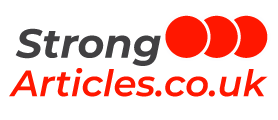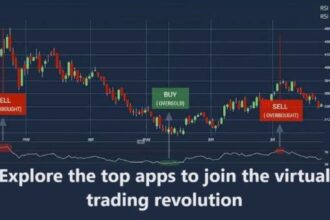The advanced wound care market is a critical sector within the healthcare industry, dedicated to the treatment of chronic wounds. As of 2023, this market has reached a substantial value of USD 9.4 billion and is projected to grow at a noteworthy compound annual growth rate (CAGR) of 6.90% during the forecast period spanning 2024 to 2032. By the end of this period, it is expected to achieve a significant milestone, reaching an estimated value of USD 17.2 billion by 2032. This robust growth trajectory is underpinned by several factors, including technological advancements, an increasing awareness of wound care, a growing aging population, and the prevalence of chronic wounds.
In this comprehensive blog post, we will take an in-depth look at various facets of the advanced wound care market, providing detailed insights into its overview, dynamics, trends, segmentation, growth prospects, recent developments, competitor analysis, key players, and frequently asked questions (FAQs).
Advanced Wound Care Market Overview
The advanced wound care market centers around the management of chronic wounds, which may arise from conditions such as diabetes, venous leg ulcers, pressure ulcers, and surgical wounds. Diverging from conventional wound care, advanced wound care employs innovative products and therapies designed to expedite the healing process and diminish the risk of complications.
This market encompasses a broad spectrum of advanced wound care products, including dressings, grafts, and devices that aim to facilitate enhanced wound healing. These products find application in diverse healthcare settings, including hospitals, clinics, and home care.
Key Takeaway:
Advanced wound care involves the use of innovative solutions to treat chronic wounds efficiently and reduce the chances of complications. These solutions include a range of products tailored to accelerate the healing process, with applications across various healthcare settings.
Advanced Wound Care Market Dynamics
Several pivotal dynamics contribute to shaping the advanced wound care market:
1. Increasing Prevalence of Chronic Wounds
The burgeoning incidence of chronic wounds is primarily driven by factors such as the aging population, escalating rates of diabetes, and the prevalence of obesity. This surge in chronic wounds has led to a substantial demand for advanced wound care solutions, as these wounds pose a significant healthcare burden and necessitate specialized treatments for optimal outcomes.
2. Technological Advancements
Continuous advancements in wound care technologies have culminated in the development of more effective and efficient products. Innovations such as bioactive dressings, negative pressure wound therapy, and cellular-based therapies have significantly improved the wound healing process, reducing the time required for wound closure.
3. Growing Awareness
Increased awareness among both patients and healthcare providers regarding the benefits of advanced wound care has resulted in higher adoption rates. Consequently, advanced wound care has become an integral part of standard treatment protocols, further boosting market growth.
4. Favorable Reimbursement Policies
Government initiatives and reimbursement policies in various countries support the utilization of advanced wound care products. This, in turn, enhances accessibility for patients and healthcare facilities alike.
5. Market Consolidation
The advanced wound care market is currently witnessing consolidation through mergers and acquisitions. Key players are acquiring smaller companies to expand their product portfolios and geographical reach, thereby solidifying their market presence.
Key Takeaway:
The advanced wound care market is influenced by multiple factors, including the rising prevalence of chronic wounds, technological innovations, increasing awareness, favorable reimbursement policies, and ongoing market consolidation through strategic acquisitions.
External Advanced Wound Care Market Trends
In addition to internal dynamics, external factors are instrumental in shaping the advanced wound care market:
1. Telemedicine and Remote Monitoring
The integration of telemedicine and remote monitoring technologies has revolutionized wound care. Healthcare professionals can now provide guidance and track patients’ progress remotely, improving convenience and reducing healthcare costs.
2. Sustainability
Sustainability is gaining prominence in healthcare, with manufacturers exploring eco-friendly materials and production processes for advanced wound care products. This trend aligns with the broader movement toward environmental responsibility.
3. Personalized Medicine
Advances in genetics and personalized medicine are paving the way for tailored wound care solutions. These solutions take into account an individual’s genetic makeup and specific wound characteristics, ultimately enhancing treatment efficacy.
Key Takeaway:
External trends, such as the integration of telemedicine, sustainability initiatives, and personalized medicine, are shaping the advanced wound care market and contributing to its evolution.
Advanced Wound Care Market Segmentation

To gain a comprehensive understanding of the advanced wound care market, it is essential to explore its segmentation based on product type, wound type, end-user, and region:
Product Type
- Dressings: These are materials applied directly to wounds to promote healing. They can vary from traditional gauze dressings to advanced bioactive dressings.
- Grafts: Wound grafts involve the transplantation of tissue to facilitate wound closure. This includes skin grafts and bioengineered tissue grafts.
- Topical Agents: These are creams, ointments, and gels applied to wounds to aid in healing, prevent infection, and manage pain.
- Devices: Advanced wound care devices include negative pressure wound therapy systems, electrical stimulation devices, and hyperbaric oxygen therapy chambers.
Wound Type
- Diabetic Ulcers: Chronic wounds resulting from diabetes-related complications.
- Pressure Ulcers: Wounds that occur due to prolonged pressure on the skin and underlying tissues.
- Surgical Wounds: Wounds resulting from surgical procedures.
- Venous Leg Ulcers: Ulcers that develop due to venous insufficiency, typically in the lower legs.
- Others: This category encompasses various other wound types, including arterial ulcers and traumatic wounds.
End-User
- Hospitals: Advanced wound care products and therapies are extensively used in hospital settings, where complex wound cases are often treated.
- Clinics: Wound care clinics specialize in the management of chronic wounds and are a key end-user segment.
- Home Care Settings: With advancements in portable wound care devices and patient education, home care settings are increasingly adopting advanced wound care solutions.
Region
- North America: A significant market for advanced wound care due to its advanced healthcare infrastructure and increasing prevalence of chronic wounds.
- Europe: The European market is characterized by strong research and development activities in the field of wound care.
- Asia-Pacific: Emerging markets in Asia-Pacific are experiencing rapid growth, driven by rising healthcare infrastructure and awareness.
- Latin America: The Latin American market is witnessing increased adoption of advanced wound care solutions.
- Middle East and Africa: The MEA region is gradually embracing advanced wound care products as healthcare infrastructure improves.
Key Takeaway:
Segmentation of the advanced wound care market based on product type, wound type, end-user, and region allows for a more granular analysis, facilitating tailored approaches to wound care solutions across different patient populations and regions.
Advanced Wound Care Market Growth
The advanced wound care market exhibits robust growth prospects, underpinned by various factors:
1. Aging Population
The elderly demographic is more susceptible to chronic wounds due to factors like reduced skin elasticity and circulation. This demographic shift contributes significantly to the demand for advanced wound care products and services.
2. Technological Advancements
Continuous innovation in wound care technologies is expected to yield more efficient and cost-effective solutions, further propelling market growth. This includes the development of smarter dressings, advanced wound monitoring systems, and regenerative therapies.
3. Emerging Markets
Growing healthcare infrastructure and increasing awareness about advanced wound care in emerging markets present significant growth opportunities. As these regions develop, demand for advanced wound care products is expected to surge.
4. Integration of Artificial Intelligence
The integration of artificial intelligence (AI) and machine learning into wound care diagnostics and treatment recommendations is enhancing the accuracy and efficiency of wound management.
5. Patient-Centric Approaches
The adoption of patient-centric approaches, focusing on individual needs and preferences, is driving the development of more customized wound care solutions.
Key Takeaway:
The advanced wound care market’s growth is fueled by demographic shifts, continuous technological innovation, emerging market opportunities, the integration of AI, and a heightened focus on patient-centric care.
Recent Developments in the Advanced Wound Care Market
The advanced wound care market is characterized by a constant stream of innovations and developments. Recent advancements include:
- Introduction of 3D-Printed Wound Dressings: The emergence of 3D-printed wound dressings offers customization and precision in wound care, ensuring a better fit and improved healing outcomes.
- Expansion of Telemedicine Platforms: The expansion of telemedicine platforms for remote wound monitoring and consultation has revolutionized wound care. Patients can receive expert guidance without the need for frequent in-person visits.
- Development of Advanced Biologics and Regenerative Therapies: Researchers and companies are actively working on advanced biologics and regenerative therapies that stimulate the body’s natural healing processes, accelerating wound closure.
- Strategic Collaborations: Strategic collaborations between healthcare providers, technology companies, and research institutions are accelerating research and product development. These partnerships aim to bring innovative solutions to the market more rapidly.
Key Takeaway:
The dynamic nature of the advanced wound care market is evident through recent developments, which encompass 3D printing, telemedicine expansion, advanced biologics, and strategic collaborations. These developments aim to improve patient outcomes and redefine wound care standards.
Advanced Wound Care Market Analysis and Competitor Analysis
In-depth market analysis involves a comprehensive assessment of critical aspects such as patent analysis, grants analysis, clinical trials analysis, funding and investment analysis, and partnerships and collaborations analysis conducted by key industry players. These analyses provide valuable insights into market trends, innovation, and competitive positioning.
Key Players
Prominent players in the advanced wound care market include:
- Smith & Nephew plc: A global leader in advanced wound management, Smith & Nephew offers a wide range of wound care products, including dressings and devices.
- 3M Healthcare: Known for innovation, 3M Healthcare provides advanced wound dressings and other products designed to optimize wound healing.
- Mölnlycke Health Care: A leading wound care company, Mölnlycke specializes in advanced wound dressings and solutions for healthcare professionals.
- ConvaTec Group plc: ConvaTec focuses on products and technologies for ostomy care, continence care, and advanced wound care.
- Coloplast Group: Coloplast offers innovative wound care solutions, including dressings and skin barriers.
- Integra LifeSciences Corporation: Integra is known for its regenerative medicine products, which include advanced wound care solutions.
- MPM Medical Inc.: MPM Medical specializes in wound care dressings, providing options for various wound types.
- Organogenesis Holdings Inc.: Organogenesis focuses on regenerative medicine and offers advanced wound care products derived from living cells.
- Acelity (acquired by 3M): Acelity, now a part of 3M, offers advanced wound therapy solutions, including negative pressure wound therapy.
- Medline Industries, Inc.: Medline is a leading manufacturer and distributor of healthcare products, including wound care supplies.
These companies drive innovation and competitiveness within the industry through research and development, strategic partnerships, and product launches.
Key Takeaway:
An in-depth competitor analysis showcases the industry leaders who are at the forefront of innovation, ensuring that advanced wound care products and therapies continue to evolve and meet the evolving needs of patients and healthcare providers.
Frequently Asked Questions (FAQs)
1. What is advanced wound care?
Advanced wound care entails the use of innovative products and therapies to expedite the healing process of chronic wounds, such as diabetic ulcers, pressure ulcers, and surgical wounds. These solutions encompass a range of products tailored to accelerate healing and reduce complications.
2. What factors are driving the growth of the advanced wound care market?
The market’s growth is propelled by factors including the increasing prevalence of chronic wounds, continuous technological innovations, growing awareness, favorable reimbursement policies, and ongoing market consolidation through strategic acquisitions.
3. How is the advanced wound care market segmented?
The advanced wound care market is segmented based on product type, wound type, end-user, and region. This segmentation allows for a more precise analysis, tailoring wound care solutions to various patient populations and regions.
4. Who are the key players in the advanced wound care market?
Key players in the market include industry giants such as Smith & Nephew plc, 3M Healthcare, Mölnlycke Health Care, ConvaTec Group plc, Coloplast Group, and others. These companies drive innovation and competitiveness within the industry through research and development, strategic partnerships, and product launches.
5. How is AI integrated into advanced wound care?
Artificial intelligence (AI) is integrated into advanced wound care through AI-powered diagnostics and treatment recommendations. AI algorithms analyze wound data, aiding in accurate diagnosis and the formulation of personalized treatment plans.
EXPLORE MORE




